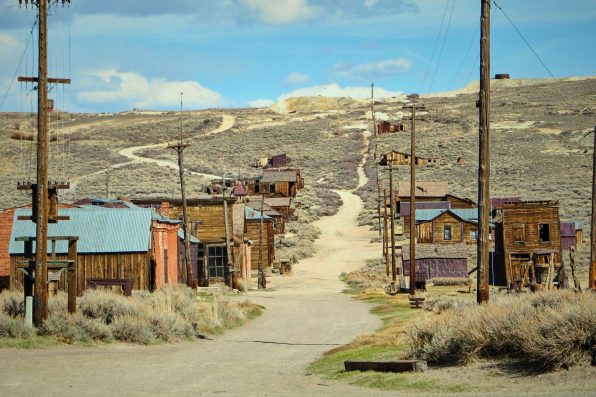In Northeastern Oklahoma, A Town That Was Once A Bustling Mining Center During The Early 1900s Is Now Abandoned And Known As The “Most Toxic Ghost Town In America”

The title of “most toxic ghost town in America” is currently held by Picher, a town located in northeastern Oklahoma. In the early 1900s, Picher was a mining center bustling with activity. Since then, the town has been abandoned and is surrounded by heaps of toxic waste.
The town was named after O.S. Picher, who owned the Picher Lead Company. People flocked to Picher when lead and zinc ore were discovered by a man named Harry Crawfish in 1913.
Already, there were several other mines running in the nearby area. However, the ore in Picher was the biggest find in the region’s history. By 1926, the population had reached a high of 14,000.
More than $20 billion in ore was produced from Picher between 1917 and 1947. Eventually, the lead and zinc mining industry began to decline, and it was completely stopped in 1967.
The mines shut down, and people moved away. Only around 2,000 residents were left in 1980. Soon, they started experiencing symptoms of lead poisoning.
The decades of mining had resulted in piles of toxic gravel-like waste scattered all over the town, which was created through the separation of valuable lead and zinc from the ore.
Furthermore, when the mines closed, the machines that pumped water from them came to a halt as well. The shafts flooded, causing contaminated water to trickle into creeks and kill off wildlife. The creeks even turned red due to the presence of heavy metals.
Before the citizens of Picher were aware of the harmful effects of the toxic waste piles, they were considered structures utilized by the community. Families had picnics on top of them. Kids rode their bikes on them and added the waste to their sandboxes. When people went swimming in the river, their hair would often turn orange, and the color wouldn’t wash out.
Gradually, teachers noticed that students in Picher scored lower on standardized tests than other children in Oklahoma. In the early 1990s, the Indian Health Service found that the kids in Picher had high levels of lead in their blood, which explained why their learning and development were behind.

kenzos – stock.adobe.com – illustrative purposes only
In 1983, the Environmental Protection Agency declared Picher a Superfund Site, which is the name given to locations polluted with hazardous materials. The organization bought up many properties and attempted to clean up the town.
This proved to be a challenge because of all the mines underneath the city. The mines made the ground unstable, causing houses to collapse.
By 2000, only 1,640 residents remained. After a tornado struck in 2008, the population dropped even further. The state of Oklahoma officially disincorporated Picher on September 1, 2009.
Just 20 people occupied the town in 2010. And, in 2015, the last business in town closed when pharmacist Gary Linderman died.
Sign up for Chip Chick’s newsletter and get stories like this delivered to your inbox.
More About:Freaky





